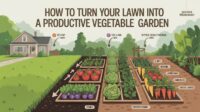Top 7 Vegetables for a Low-Maintenance Garden
Published: 2025-10-19
Introduction: Why Low-Maintenance Vegetables Matter
Gardening should be joyful not stressful. For beginners and busy gardeners alike, choosing low-maintenance vegetables makes a huge difference. These crops require minimal care yet deliver consistent harvests. Because they adapt well to various conditions, they thrive even when attention is limited.
Moreover, low-maintenance vegetables reduce the need for fertilizers and pesticides. Soil health is preserved and water usage is minimized. Therefore, they are ideal for sustainable gardening. In this guide, seven top-performing vegetables will be explored. Each one has been selected for its resilience, ease of growth and popularity among gardeners.
Lettuce: Fast-Growing and Forgiving
Lettuce is one of the easiest vegetables to grow. It germinates quickly and matures in just a few weeks. Because it tolerates partial shade, it fits well in small spaces and containers.
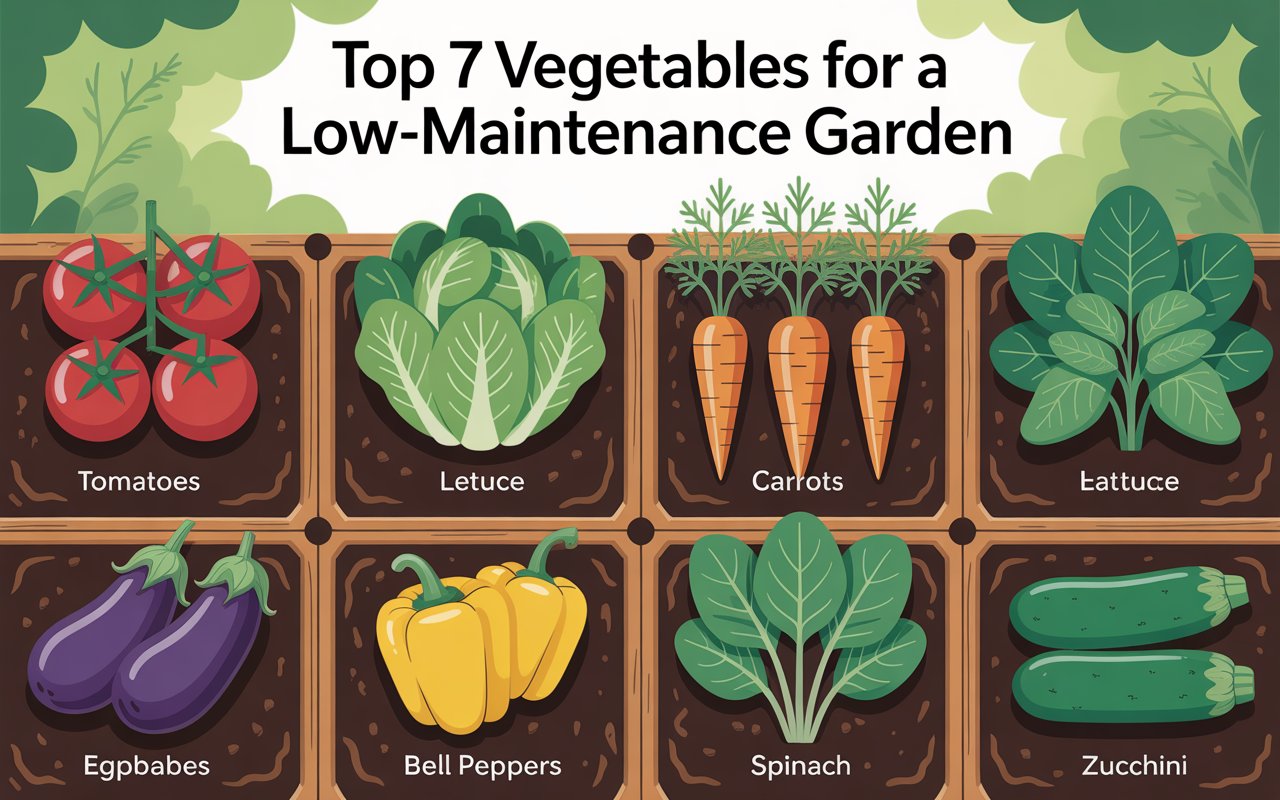
Minimal watering is required. Even if skipped occasionally, lettuce continues to grow. Loose-leaf varieties like Black Seeded Simpson and Buttercrunch are especially low-maintenance. They can be harvested multiple times through cut-and-come-again methods.
Moreover, lettuce rarely suffers from serious pests. When grown organically, it supports healthy eating and soil balance. For gardeners seeking fast results, lettuce is highly recommended.
Onions: Hardy and Pest-Resistant
Onions are known for their durability. Once planted, they require little attention. Because they grow underground, they are protected from many pests. Their strong scent also repels insects naturally.
Watering is needed occasionally. However, overwatering should be avoided. Onions prefer well-drained soil and full sun. Sets or seedlings are planted in early spring and harvested in late summer.
Additionally, onions store well after harvest. This makes them ideal for long-term use. Their low-maintenance nature and culinary value make them a staple in backyard vegetable gardens.
3. Potatoes: Productive with Minimal Effort
- Potatoes are among the most rewarding vegetables to grow. They thrive in containers, raised beds and traditional plots. Because they require little fertilization, they suit organic gardening practices.
- Once planted, potatoes grow steadily.
- Occasional watering and hilling are needed. Hilling involves covering the stems with soil to encourage tuber formation.
- This process is simple and effective.
- Pests rarely affect potatoes when crop rotation is practiced.
- After harvest, they can be stored for months.
- Their versatility and ease of care make them perfect for low-maintenance gardens.
4. Carrots: Compact and Resilient
Carrots are compact root vegetables that require minimal space. They grow well in loose soil and tolerate cooler temperatures. Because they are slow-growing, they need little intervention.
Thinning may be required once seedlings emerge. However, this task is quick and infrequent. Carrots resist most pests and diseases. Their foliage is rarely targeted by insects.
Moreover, carrots can be left in the ground until needed. This natural storage reduces post-harvest handling. For gardeners seeking nutritious and easy-to-grow crops, carrots are an excellent choice.
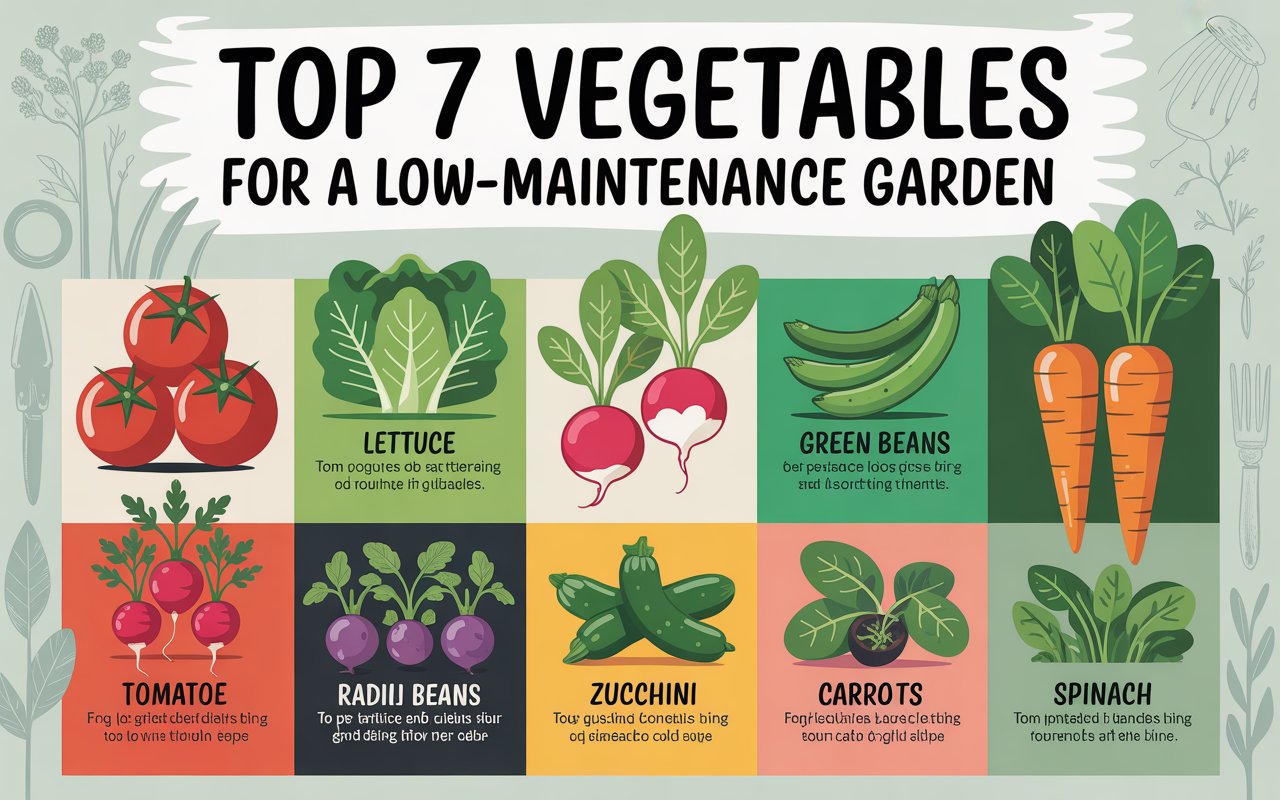
5. Bush Beans: Quick and Self-Sufficient
Bush beans are fast-growing legumes that require no staking. Unlike pole beans, they remain compact and manageable. Because they fix nitrogen in the soil, they improve fertility naturally.
Watering is needed during flowering and pod development. However, drought tolerance is high. Beans mature in 50 to 60 days and can be harvested multiple times.
Pests are minimal and diseases are rare. Bush beans thrive in full sun and well-drained soil. Their productivity and simplicity make them ideal for beginner gardeners.
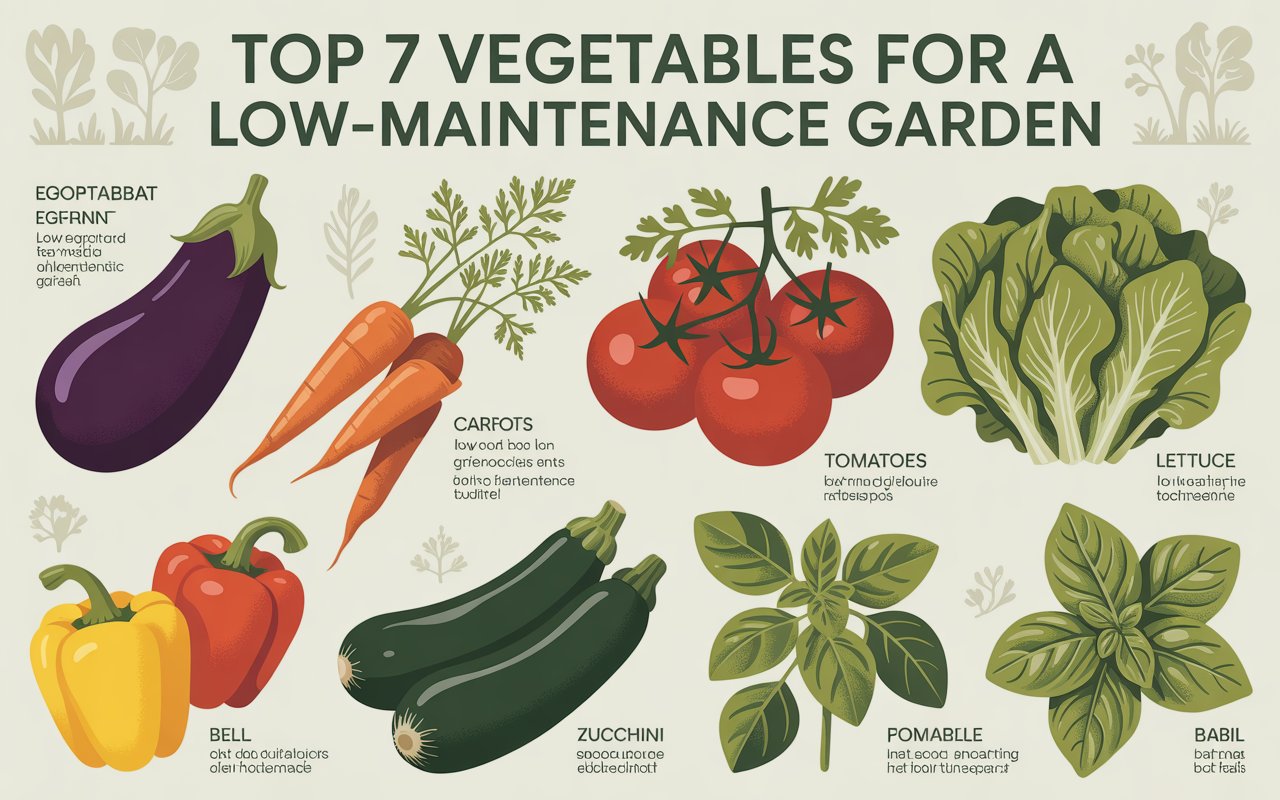
6. Zucchini: Abundant and Easy to Grow
Zucchini is famous for its prolific yield. Once established, it produces fruit continuously. Because it grows quickly, it fills garden space efficiently.
Watering is needed during dry spells. However, zucchini tolerates occasional neglect. Mulching helps retain moisture and suppress weeds. Pollination is aided by bees and other insects.
Pests like squash bugs may appear but are easily managed. Organic sprays and companion planting reduce infestations. Zucchini’s reliability and abundance make it a top pick for low-maintenance gardens.
| 7. Kale: Tough and Nutrient-Dense |
|---|
Kale is a hardy leafy green that thrives in cool weather. It resists frost and continues growing through winter in mild climates. Because it tolerates poor soil, it suits various garden types. Watering is needed occasionally. However, kale survives dry periods well. Its leaves are harvested continuously and regrow quickly. Pests are minimal and diseases are rare. Moreover, kale is packed with vitamins and antioxidants. Its resilience and nutritional value make it a favorite among health-conscious gardeners. |
🌿 Benefits of Growing Low-Maintenance Vegetables
- Time-saving: Less watering and weeding required
- Cost-effective: Fewer fertilizers and pesticides needed
- Eco-friendly: Supports organic gardening and soil health
- Beginner-friendly: Easy to grow with minimal experience
- Space-efficient: Suitable for containers and small plots
Sources:
- Choose vegetables suited to your climate
- Use compost to enrich soil naturally
- Mulch to retain moisture and suppress weeds
- Practice crop rotation to prevent pests
- Monitor growth and harvest regularly
These tips ensure that your garden remains productive and stress-free.
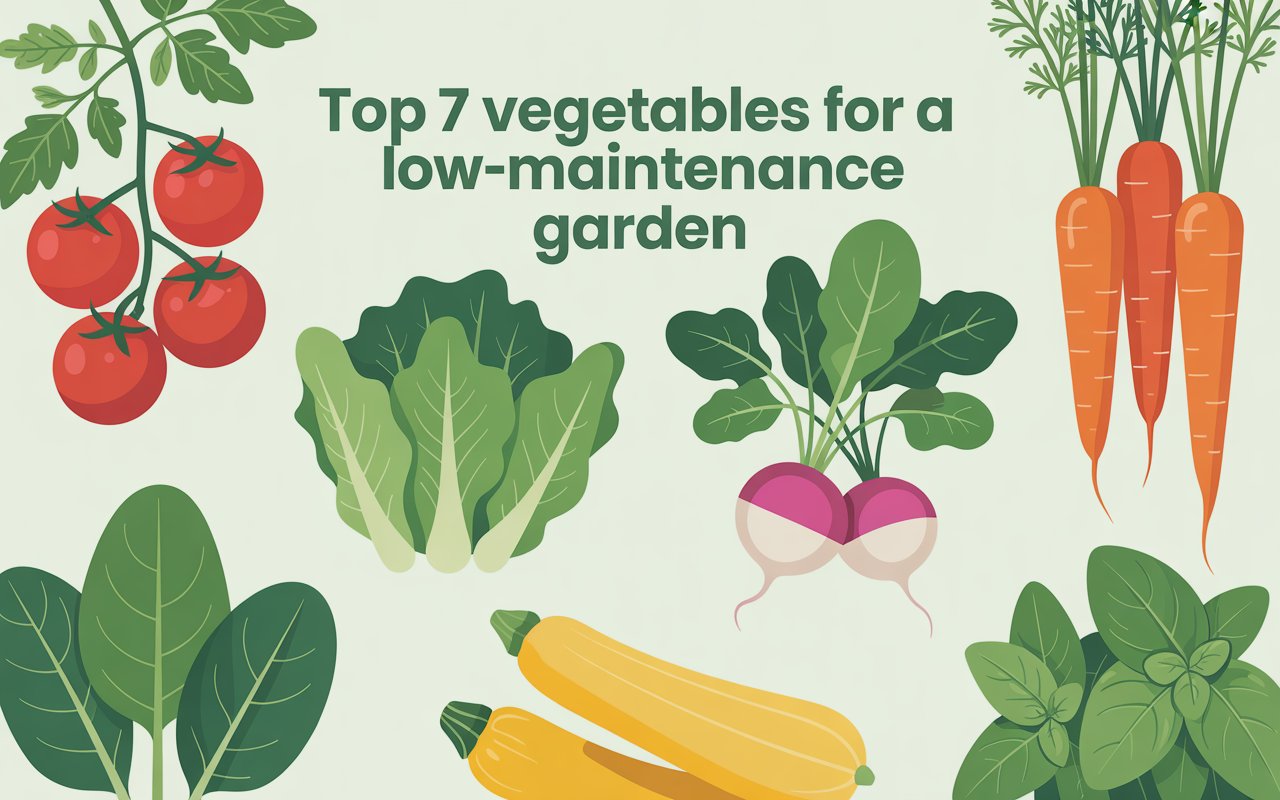
FAQs: Quick Answers for Gardeners
Lettuce is considered the easiest due to its fast growth and minimal care.
Yes most of them thrive in pots and raised beds.
Once or twice a week depending on weather and soil type.
Absolutely they are ideal for those new to gardening.
Low-maintenance vegetables offer a perfect solution for busy gardeners. They require less time and fewer resources yet
Conclusion: Grow More with Less Effort
Low-maintenance vegetables offer a perfect solution for busy gardeners. They require less time and fewer resources yet deliver abundant harvests. Whether grown in containers or backyard plots, these crops adapt well and thrive with minimal care.
By choosing resilient vegetables like lettuce onions potatoes carrots bush beans zucchini and kale, you create a garden that supports sustainability and health. With proper planning and simple techniques, your garden will flourish season after season.

- Be Respectful
- Stay Relevant
- Stay Positive
- True Feedback
- Encourage Discussion
- Avoid Spamming
- No Fake News
- Don't Copy-Paste
- No Personal Attacks



- Be Respectful
- Stay Relevant
- Stay Positive
- True Feedback
- Encourage Discussion
- Avoid Spamming
- No Fake News
- Don't Copy-Paste
- No Personal Attacks

